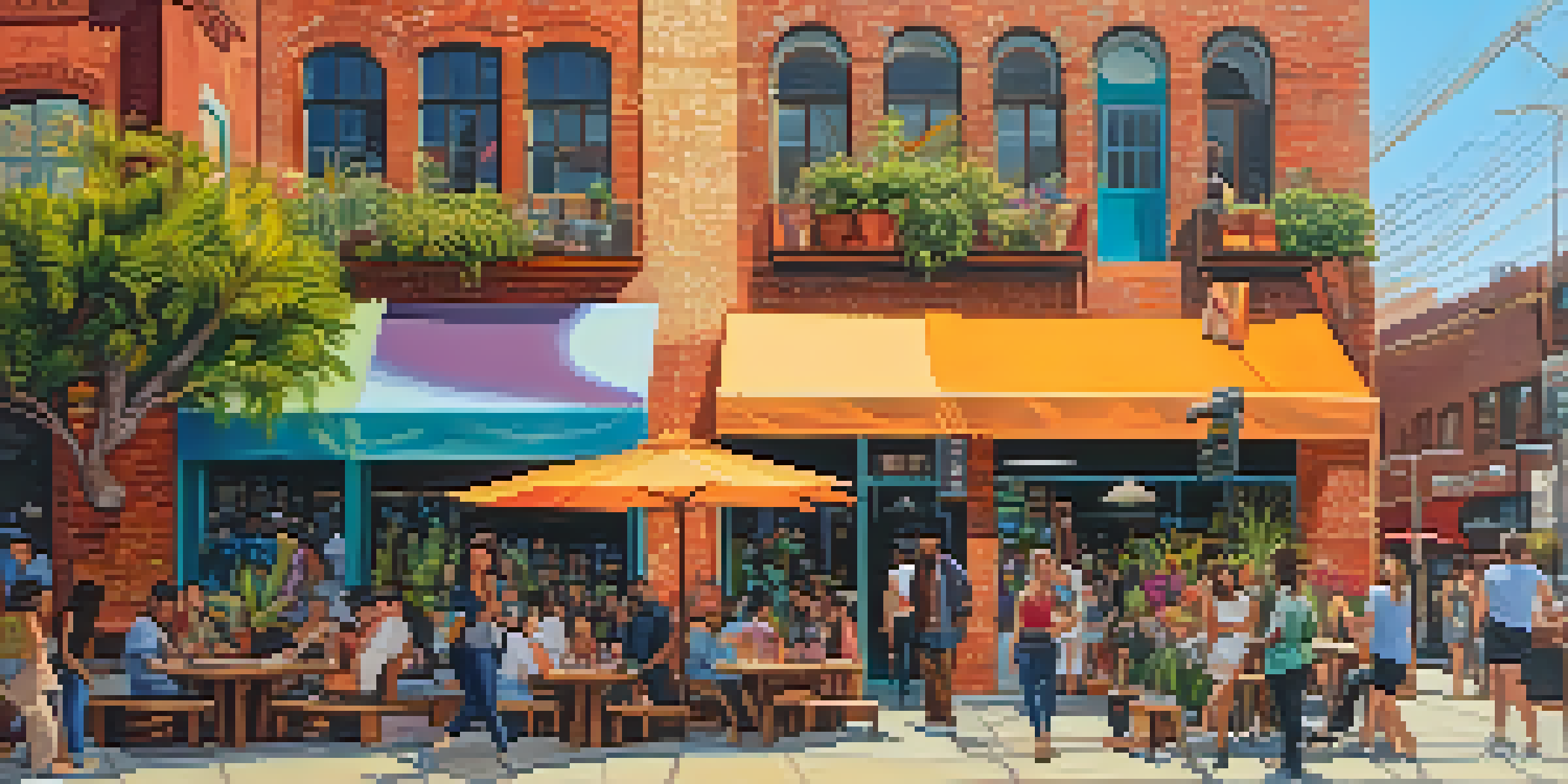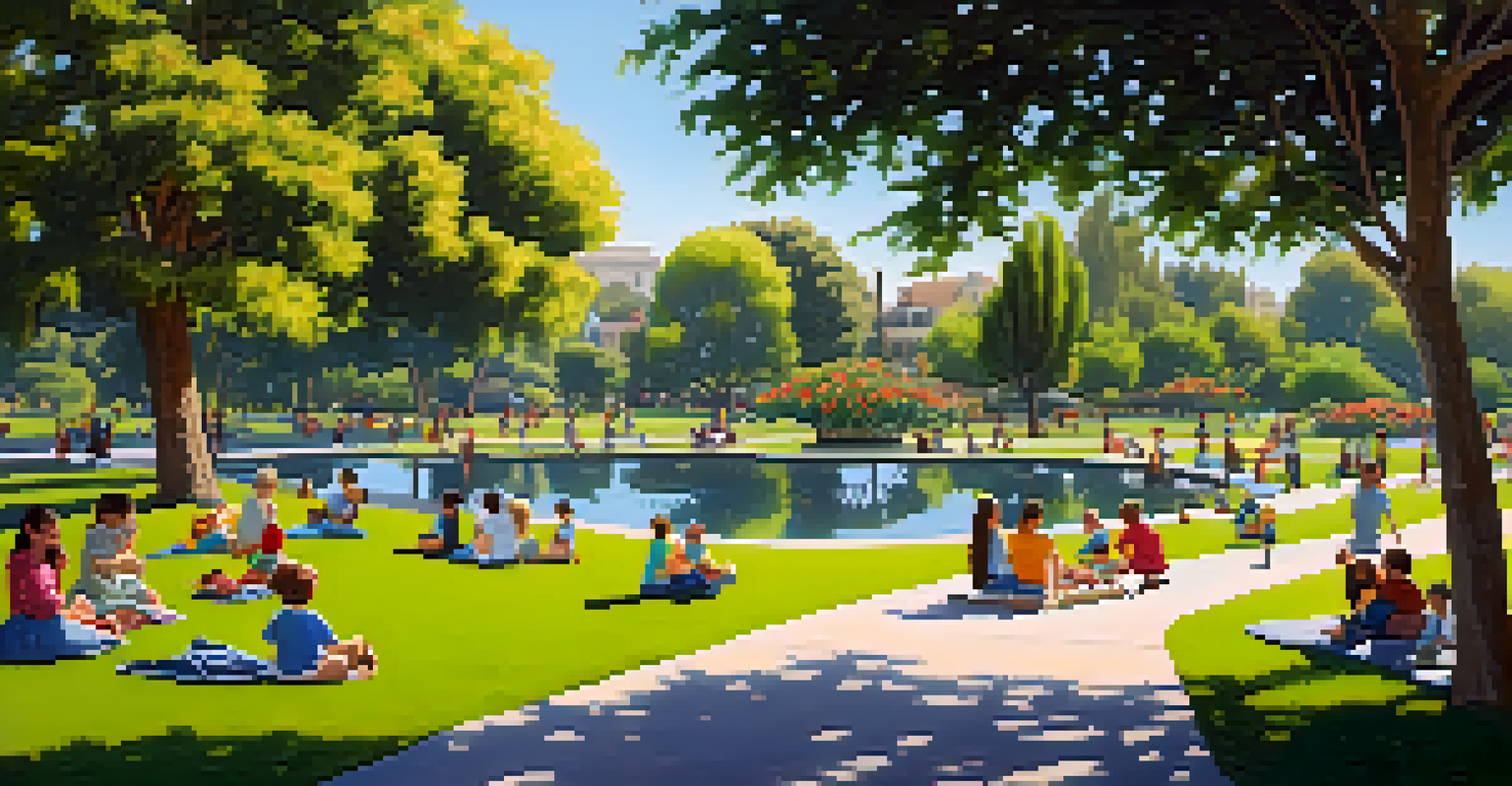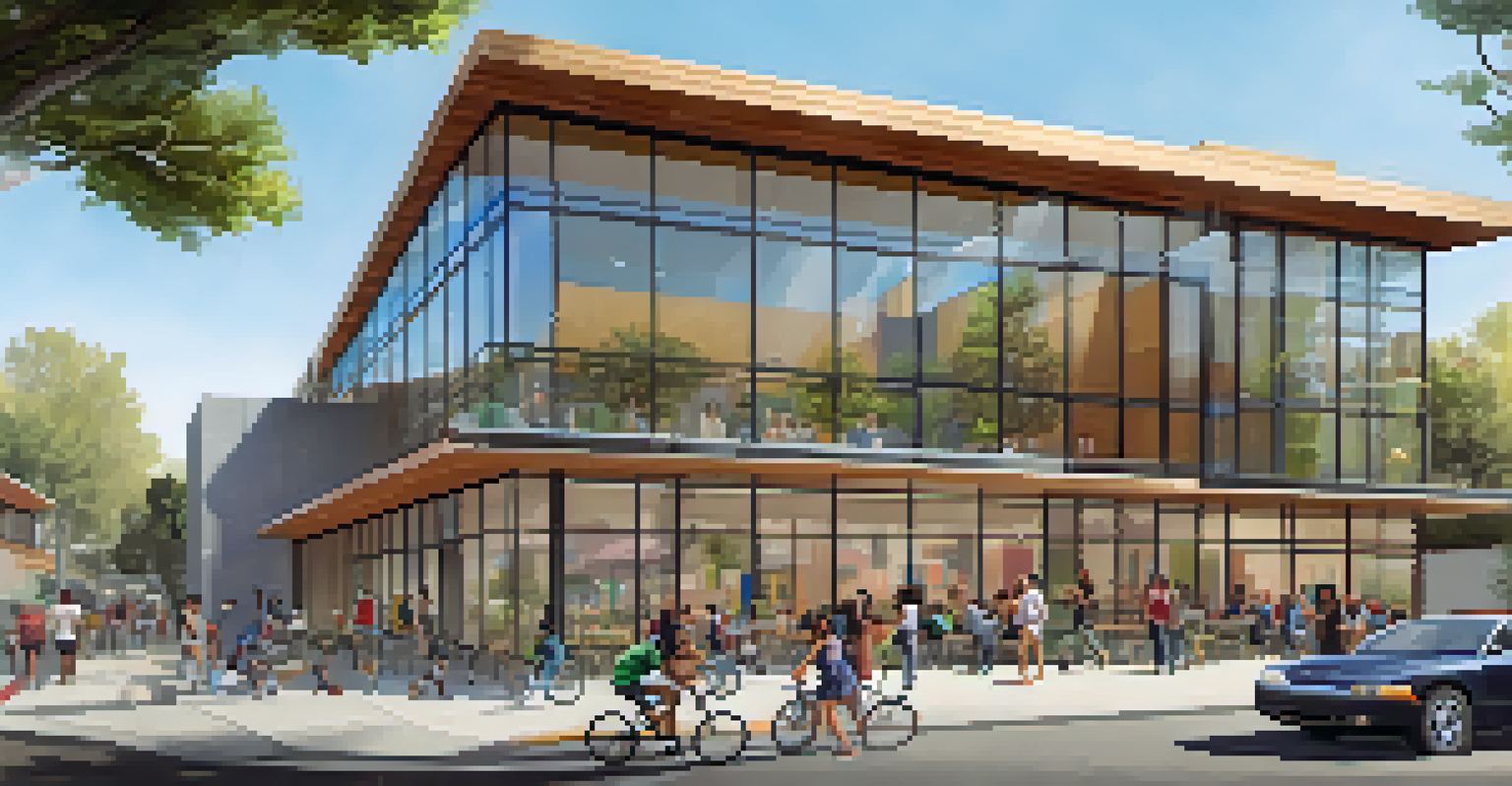Revitalization Projects and Their Impacts on LA Neighborhoods

Understanding Revitalization Projects in LA
Revitalization projects in Los Angeles are initiatives aimed at rejuvenating underdeveloped or declining neighborhoods. These projects often involve a mix of infrastructure improvements, housing developments, and community services. Essentially, they aim to breathe new life into areas that may have been overlooked or neglected over time.
Revitalization is not just about creating new structures; it's about rebuilding community ties and fostering a sense of belonging.
For instance, the transformation of the Arts District in Downtown LA showcases how a formerly industrial area can evolve into a vibrant cultural hotspot. With new galleries, restaurants, and living spaces, revitalization initiatives can help create a sense of community and attract new residents and businesses alike.
While these projects can bring about positive changes, it's important to consider their implications for existing residents. Gentrification can sometimes follow revitalization efforts, leading to rising property values and the potential displacement of long-term community members.
Economic Benefits of Revitalization
One of the most significant impacts of revitalization projects is their potential to boost local economies. By attracting new businesses and enhancing public spaces, these initiatives can create jobs and increase economic activity within neighborhoods. For instance, the redevelopment of the Baldwin Hills Crenshaw Plaza has provided new retail options and job opportunities for local residents.

Moreover, revitalization can lead to increased property values, benefiting homeowners who have invested in their communities. As new amenities and infrastructure are introduced, the desirability of the area often rises, resulting in higher home prices and rental rates.
Revitalization Boosts Local Economies
Revitalization projects create jobs and enhance economic activity by attracting new businesses and increasing property values.
However, it’s crucial to balance economic growth with the needs of existing residents to ensure everyone benefits from these changes. Community engagement and inclusive planning are vital for creating a revitalization strategy that brings long-term economic stability.
Social Impacts of Revitalization Projects
Revitalization projects can also significantly impact the social fabric of LA neighborhoods. As new amenities and services are introduced, community interactions often increase, fostering a greater sense of belonging among residents. For example, the creation of public parks and community centers encourages social gatherings, which can strengthen community ties.
Sustainable urban development requires a balance between economic growth and community needs.
However, these changes can also lead to social tensions, particularly if long-term residents feel sidelined by newcomers. Balancing the needs and voices of both new and existing community members is essential to maintain harmony and ensure that everyone feels represented.
Moreover, by incorporating local culture and history into revitalization efforts, projects can celebrate the unique identity of neighborhoods. This approach not only honors the past but also helps create a shared vision for the future.
Environmental Considerations in Revitalization
Environmental sustainability plays a pivotal role in modern revitalization projects. Many initiatives focus on green infrastructure, such as parks, green roofs, and improved public transit options. These features not only enhance the aesthetic appeal of neighborhoods but also contribute to healthier urban ecosystems.
For instance, the transformation of the Los Angeles River has included efforts to restore natural habitats while creating recreational spaces for the community. Such projects underscore the importance of integrating environmental stewardship into urban planning.
Social Dynamics Can Shift Dramatically
While revitalization fosters community interaction, it can also create tensions between long-term residents and newcomers.
Additionally, sustainable practices can lead to long-term cost savings for municipalities and residents alike. By investing in energy-efficient buildings and renewable energy sources, neighborhoods can reduce their carbon footprint and promote a healthier living environment.
Cultural Revitalization and Community Identity
Cultural revitalization is a crucial aspect of many projects in Los Angeles, as it seeks to preserve and celebrate the unique identities of neighborhoods. By incorporating local art, music, and history into revitalization efforts, communities can maintain their heritage even as they evolve. Projects like the revitalization of Olvera Street highlight the importance of cultural preservation in urban development.
Moreover, cultural initiatives can attract tourism and stimulate economic growth while honoring local traditions. Festivals, art walks, and community events foster engagement and encourage people to connect with their surroundings.
However, it's essential to ensure that cultural revitalization efforts are authentic and inclusive. Engaging local artists and community members in the planning process can help create a sense of ownership and pride among residents.
Challenges Faced by Revitalization Projects
Despite their many benefits, revitalization projects are not without challenges. One major issue is securing funding, as these projects often require significant investment from both public and private sectors. Competing interests and financial constraints can hinder the progress of much-needed improvements in struggling neighborhoods.
Additionally, navigating the complex landscape of community needs and preferences can be daunting. Ensuring that all voices are heard and represented in the planning process is crucial for the success of any revitalization effort. This often involves holding public meetings and engaging in ongoing dialogue with residents.
Sustainability is Key for Future Projects
Integrating environmental considerations into revitalization efforts not only improves neighborhoods but also promotes healthier urban ecosystems.
Finally, measuring the long-term impacts of revitalization projects can be tricky. Tracking progress and ensuring that economic and social benefits reach the intended communities requires careful planning and commitment from all stakeholders.
Future Trends in LA Revitalization Projects
Looking ahead, the future of revitalization projects in Los Angeles is likely to be shaped by an increased focus on equity and inclusivity. As the city grapples with issues like housing affordability and displacement, community-led initiatives may gain traction, emphasizing the importance of grassroots involvement in urban planning.
Technological advancements will also play a role, with smart city innovations paving the way for more efficient and sustainable urban environments. Projects that incorporate technology into their design can enhance the quality of life for residents while addressing contemporary challenges.

Ultimately, the future of revitalization in LA will depend on collaboration between government, private sectors, and community members. By working together, stakeholders can create vibrant, inclusive neighborhoods that meet the diverse needs of all residents.